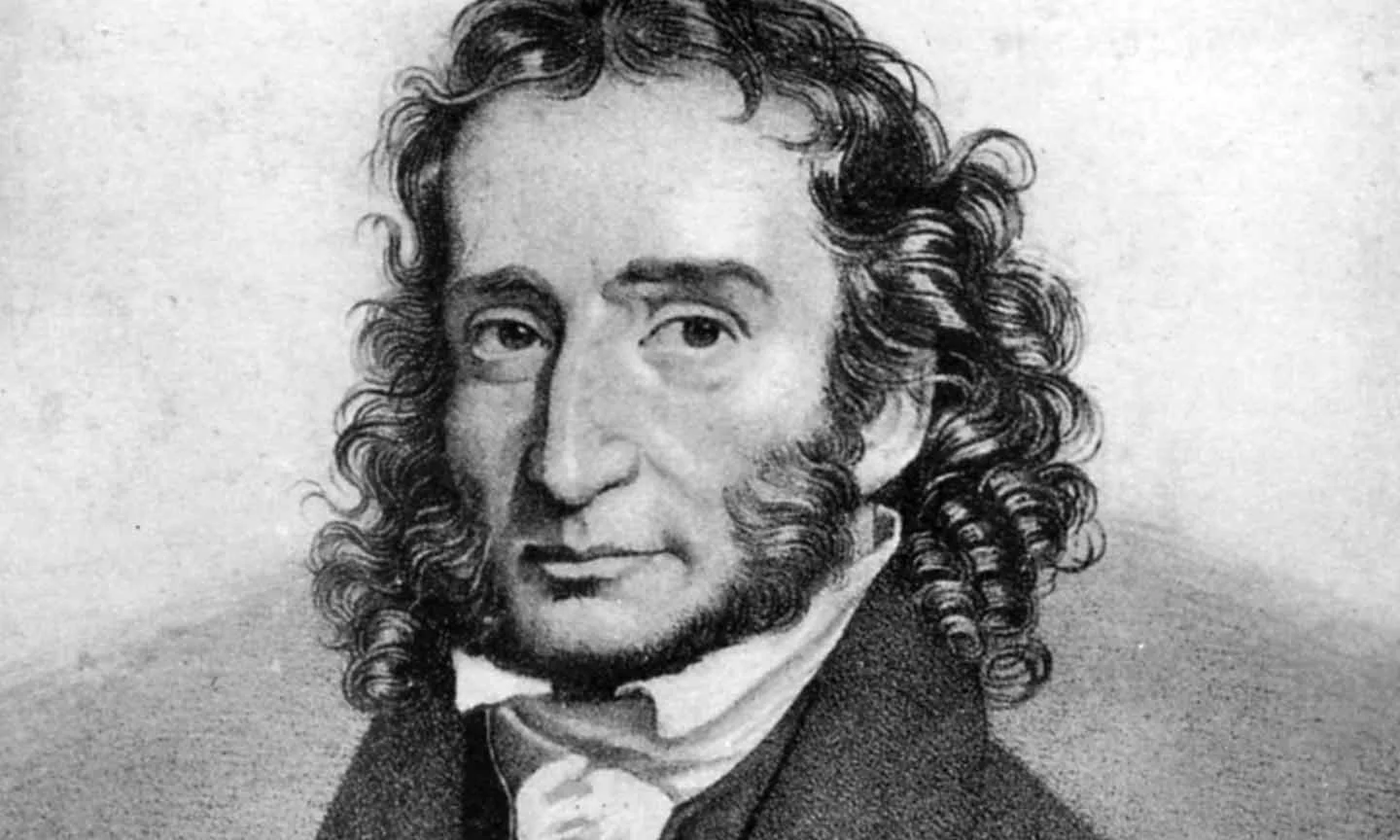Waiting to Exhale: How Breathing Helped my Paganini
Disclaimer: This article discusses breathing and is not intended to substitute for professional medical advice, diagnosis or treatment. Please seek the advice of a physician or other qualified healthcare provider if you have any conditions where breathing in a particular way may affect your health.
It was my first rehearsal with the orchestra, and I was already frustrated. I had worked for a year-and-a-half learning Paganini's Sonata for the Grand Viola and was thrilled to be performing it with my school's orchestra.
But what was not thrilling, and was currently stressing me, was the physical tension I felt seeping into my body as the rehearsal went on. Drop by drop, this tension was gumming up the intricate coordination required for the pyrotechnics of the piece, leaving my left hand feeling less like a highly skilled ballerina executing complex choreography and more like an elephant with four left feet.
I'm no stranger to physical tension, working in my daily practice to minimize it in both hands. Indeed, the fact that I HAD worked so hard on this problem was why I was so frustrated. In the high-stress environment of the orchestra rehearsal, it was clear my solutions for mitigating tension simply weren't powerful enough, and that was annoying!
Back in my studio, I brainstormed possible solutions. I only had five days until the performance, so I needed an answer, and fast!
As a teenager I had been introduced by several teachers to Karen Tuttle's idea of using the breath as a tool to both release tension and connect musically to the piece being performed. I had even worked directly with Tuttle for a few weeks at the Banff Institute. But I had never truly incorporated breathing into my playing. At the time, it had seemed like too much effort, too complicated, and unnecessary. Why, for example, would I need to coordinate my breath with my bowing? (Writing that now, when I think of my bow AS my breath, makes me painfully aware of the ignorance of teenage Travis.)
Over the years I performed small experiments incorporating my breathing into my overall musical picture and had experienced improvement each time I tried them. So, just as I came to love "the plop" nearly 15 years after I had been taught it, I decided it was time to embrace this concept from the Tuttle playbook. I can hear a collective sigh, or perhaps "huh!," from at least three of my former teachers!
Before we go into the details of HOW I planned my breathing in the Paganini, it's important to get a few things out of the way. For one, breathing is as personal as it gets, so what works for me may not work for you! In this post you'll see I'm all about exhales, but some find more comfort on inhales. Whether or not you agree with the approach to breathing I suggest, I hope you'll take time to explore how you breathe when you play and how it’s helping or hindering your performance.
Secondly, while breathing is the focus of this post,there is MUCH more to Karen Tuttle’s system of Coordination than the breath alone. I encourage you to check out the excellent “Coordination” chapter in “Karen Tuttle Legacy” book or, even better, work directly with a teacher familiar with her system.
Examining our Breath
During regular breathing, our pulse slows down slightly while exhaling and speeds up slightly while inhaling. This is one reason why breathwork that explores longer exhales, like the Physiological Sigh or 4-7-8 Breathing, are powerful ways to lower activation levels before a performance. While I've found this kind of breathwork helpful in developing more awareness of my breathing or as a calming tool BEFORE performances, I needed something more specific to focus on WHILE I was performing.
The tension problems in my Paganini rehearsal were particular to the first two pages of the piece. After those opening pages, it was easier for me to settle into the music making. I made a plan to strategically insert release points into the first two pages. If they functioned as planned, these points would act like a pressure valve, allowing me to quickly release accumulated tension at regular intervals and preventing it from interfering significantly with my playing.
When planning my breathing, I focused on exhales. Why exhales, and not inhales? In my own playing and the majority of string players I've observed, the tendency in stressful situations is to hold the breath. Of course, when the body runs out of air, to preserve itself it's going to breathe! But constantly building up an oxygen deficit sends signals of panic to the brain, and panic is the last thing we want any extra of in a performance!
So the challenge, as I see it, is to think strategically about exhales, and let the inhales take care of themselves.
This approach shares much with Simon Fischer's philosophy on vibrato. While vibrato has both a backward and forward motion, at faster tempos it becomes easier to simply think about the forward motion, letting the backward motion take care of itself.
We generally feel a deeper sense of physical relaxation when we exhale. If I exhale strongly from my stomach/diaphragm (like a "huh" or a sigh), my shoulders relax and I feel the weight of my whole upper body release downwards towards the ground. This relaxation is beneficial for releasing tension, but it also promotes healthy sound production—the relaxation of the shoulders helps release the weight of the arm through the bow and into the string at the point of contact.
Breathing in Character
The opening is a Recitativo, or music to be played in a manner imitating speech. To capture both the melodramatic character, and the spoken quality in the articulation of the notes, I wrote out lyrics for myself. The piece is like a soap opera, hence the somewhat cheesy lyrics!
(In case it’s hard to read, the lyrics are: “I’m so lonely. Because you left me. Why’d you leave me? You never cared, so I’m moving on!”)
To capture this particular character, I thought like a Method actor, asking myself, "How could I inhabit the character telling this story? What would their body language be like? How would they breathe?" An exasperated sigh seemed appropriate, so that’s how I came in on the opening G.
Since there are so many rests in the opening line, and I knew my energy levels would be highest at the beginning of the piece, I choreographed my rests. How could I use the rests to execute the character changes reflected in my lyrics? The second statement has a similar character as the opening, but because it's lower in register, the energy level feels less intense, so my exhale reflected that lowering of intensity. The third entrance, an echo of the second in the lower octave, has a feeling of self-pity to me, so a smaller breath with a resigned or lonely quality felt right. The final entrance in this phrase, starting on the low E-flat in m. 19, morphs from resignation to anger/frustration, so the breathing has a more focused and intense quality to it.
That seems like a lot of work for a few lines! But having something to focus on during those rests kept me in the music AND physically ready for everything I had to play.
What did this look like in practice? Here's me playing the opening section. Note, in this first run through I'm intentionally making my breathing louder so that it's obvious where and how it occurs.
This second run is a better representation of how I wanted my breathing to go in performance. It's my feeling that your breathing generally shouldn't distract the audience from your playing, but context matters: in a chamber music setting an audible breath is an indispensable tool for cueing entrances!
Exhaling Before a Shift
Doing an exhale, or "huh," is a great way to set yourself up physically for a big shift or a climactic note. But as Jeffrey Irvine discusses in the "Karen Tuttle Legacy" section on Coordination, timing the release is important!
In measure 20, if I do a release BEFORE the big shift, I physically set myself up well to go for it, as I'm approaching the shift from a place of increased relaxation. But, just as importantly, I'm also giving my brain a positive task to focus on, allowing my left hand to do what it needs to without my micro-managing left brain getting in the way.
Releasing During a Note
A release in the middle of a note, like the high E-flat in m. 20, or the C in the next bar, serves to energize it through the weaker middle part of the bow, drawing your attention to how you are crafting (or not crafting!) the middle and end of the note as it leads into the next note. When this is coupled with a re-pull (which I don't have the space to discuss here!) it serves to energize and intensify the note.
Here's how that passage sounds first without and then with releases in the middle of the high E-flat and the C.
Do you notice a difference? In the version with releases, I hear a clearer musical direction in the two long notes.
The Proof is in the Pudding
How did it go in performance? Well, I won't lie and say I executed every detail of my breathing plan, as I simply didn't have enough time before the performance for it to sink in as much as needed. But the parts I did remember were a great help in releasing tension and keeping me in the character of the music.
In fact, the experiment proved to be so helpful that I've now begun to think much more deeply about how I breathe in EVERY piece that I play. As I've experienced it, the breath can serve both as a critical valve for releasing the physical tension that creeps up during playing and as a powerful way to connect musically to the piece being performed. I encourage you to spend some quality time examining your own breathing and how it can help your playing!










